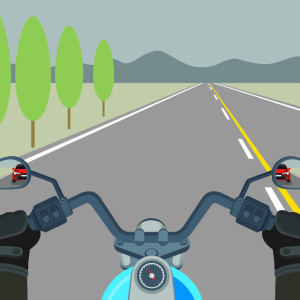The time to find out if there’s anything wrong with your motorcycle is before you ride – not in the middle of traffic.
It’s a good idea to thoroughly read your motorcycle’s manual before you start riding, so you know about your motorcycle’s features.
You should check that each of the following items is in good working order before you ride.
Make sure your controls are in good working order before you start out. Remember to check the following.
Try the front and rear brakes one at a time. Make sure each one holds the motorcycle when it’s fully applied.
Make sure these controls work smoothly.
Check the cables for kinks or broken strands. Make sure cables are lubricated.
Make sure you can operate all hand and foot controls when you’re seated comfortably on the motorcycle.
Make sure your tyres are in good condition and check the following features.
Your motorcycle won’t handle properly if the air pressure is too low or too high, as braking and steering will be affected. Check your manual for the correct tyre pressure for your motorcycle. Incorrect tyre pressure is common in motorcycle crashes.
Worn or uneven tread will affect the handling of the motorcycle and can make it harder to control on slippery or uneven surfaces.
Check for cuts, nails stuck in the tread, and cracks in the sidewalls. Remember, a blowout on a motorcycle can be extremely dangerous.
Keep all your lights clean and check them regularly.
Check that all bulbs are working and the lenses are clean.
Check the headlight before riding. Pass your hand in front of the beam to make sure the headlight is really on.
Try your dip switch to make sure both high and low beams are working.
If your motorcycle has a hazard light switch, check it’s working.
Try each of your brakes to make sure each one flashes your brake light.
Check your horn works.
Check the drive chain or belt for lubrication, wear and adjustment. Your manual will explain how to correctly adjust these.
You need to have a good view of what’s happening around and behind you – you should have 2 mirrors for this.
Clean and adjust them before you start, as it’s difficult and dangerous to ride with one hand while trying to adjust a mirror.
Adjust your mirrors outward – far enough to see around your own body. You should be able to see about half of the lane behind and as much as possible of the lane next to you.

Adjust your mirrors for the best view
Check your user manual for the correct grades of fuel and oil. Make sure they’re at the correct levels before you start riding.
Running out of petrol can be dangerous, especially if it happens when you can’t get off the road quickly. Make sure you know the position and operation of the fuel tap. Don’t ride long distances with the fuel tap on reserve. The reserve tank should only be used to get to the nearest petrol station.
Lack of oil can cause your engine to seize. This could result in your rear wheel locking, causing you to lose control.
You’re more at risk when riding an unfamiliar motorcycle. Before you ride a motorcycle you haven’t ridden before, you should:
Ride cautiously until you’re used to the way the motorcycle handles. Test the brakes to get the feel of how they operate. Take turns and corners slower and give yourself extra stopping distances.